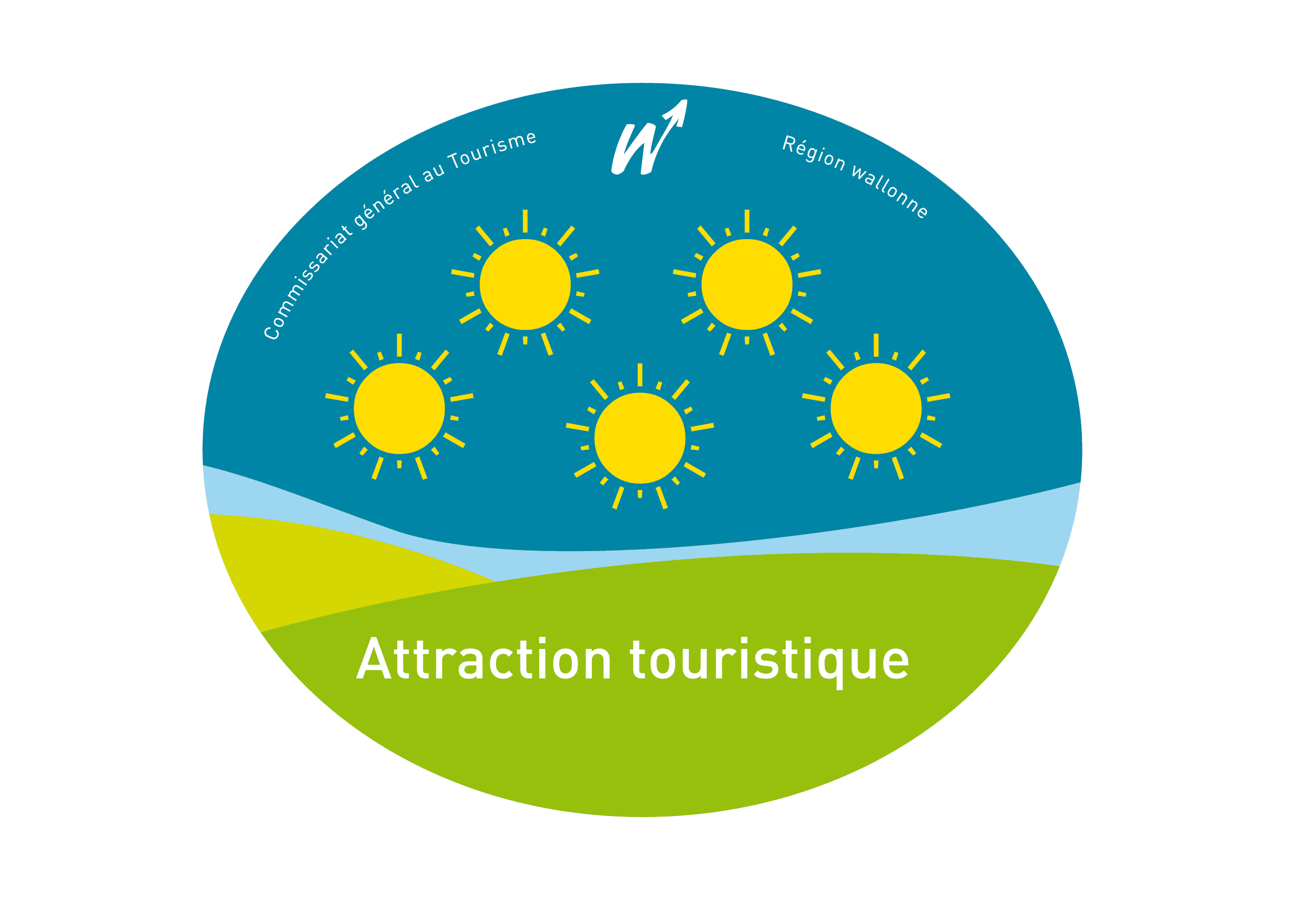Hergé
Curious about everything that made up his century, Hergé collected mythical and historical images and signs. With his art of drawing and the science of storytelling, he gave European comics their letters of nobility.
1907
Birth of Georges Remi
in Etterbeek, Belgium, on May 22.

Georges Remi and his younger brother Paul in 1918. Collection Studio Hergé
1920
The young boy begins his secondary school at Collège Saint-Boniface, in Brussels. He’s deeply bored.
1921
He joins the school’s Scout troop, where he receives the totemic name of Renard curieux. His first drawings appeared in “Never Enough”, the school’s Scout magazine, then, from 1923, in “Le Boy-Scout belge”, the monthly magazine of the Belgian Scouts.

In August 1922, at the age of fifteen, Georges (right) left his country for the first time. Here in Samedan, Switzerland. © St. Boniface-Parnassus Foundation
1924
It‘s the name Hergé – RG, the initials of Georges Remi – that he now signs his illustrations
1926
Creation of Totor CP des Hannetons, prefiguration of Tintin, in The Belgian Boy Scout.

In 1926, at the age of 19, Georges Remi volunteered for military service.
He is a candidate for reserve second lieutenant in the First Regiment of Foot Chasseurs, based at the Place Dailly barracks in Schaerbeek. He always carried a small notebook in which he sketched his companions. He was demobilized after twelve months with the rank of reserve sergeant.
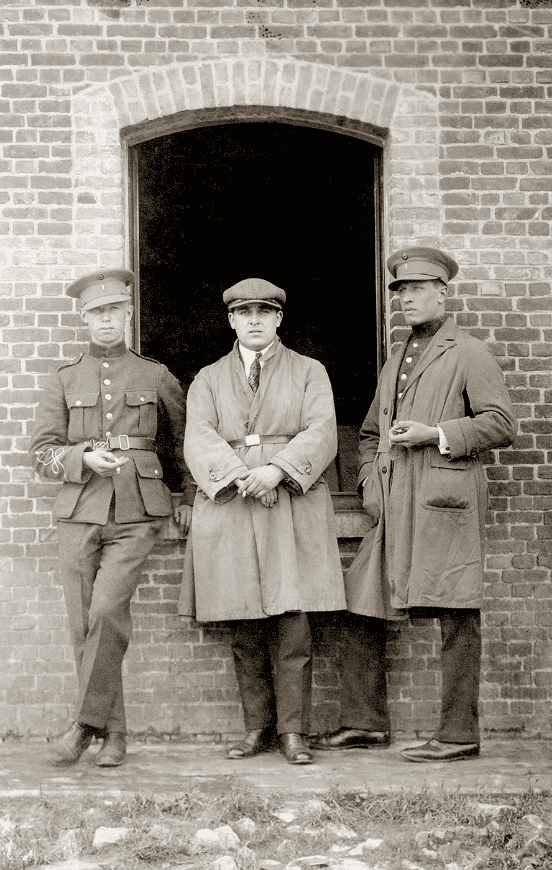
Sergeant Remi (left). © Michel Lichtaert collection
1930
Creation of Quick and Flupke, kids from Brussels and actors of short complete stories in Le Petit Vingtième. Publication of the first Tintin adventure: Tintin in the Land of the Soviets.
1932
Georges Remi married Germaine Kieckens, secretary to the director of Le Vingtième Siècle.
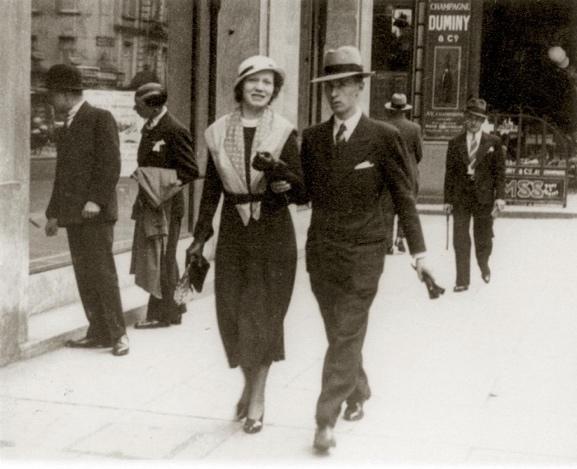
1932: Germaine and Georges Rémi in the streets of Brussels. Hergé Studios Collection.
1934
Maison Casterman, based in Tournai (Belgium), becomes the publisher of The Adventures of Tintin. The meeting with a young Chinese student, Chang Chong-chen, marked a decisive turning point. Hergé became convinced of the importance of a well-constructed plot and the need to document himself. He begins to take seriously what used to be a simple game…

1934. Hergé, Germaine and Chang in Brussels. © Jacques Langevin / SYGMA
1935
For the French weekly, Coeurs Vaillants, Hergé created a new series and new heroes: Jo, Zette and Jocko.

Cover of issue 3 of Cœurs Vaillants - January 19th, 1936
1939
Following Hergé’s stance in favor of the Chinese people in The Blue Lotus, the creator of Tintin was invited by Chiang Kai-shek’s wife to visit China. The impending war would prevent this journey.
1940
On 10th May, Belgium was invaded by German troops. Le Vingtième Siècle and Le Petit Vingtième are no longer published. Tintin in the Land of Black Gold, the episode currently being published, is postponed for eight years. Hergé undertook another, Le Crabe aux pinces d’or, which he published in Le Soir, one of the only newspapers allowed to appear.
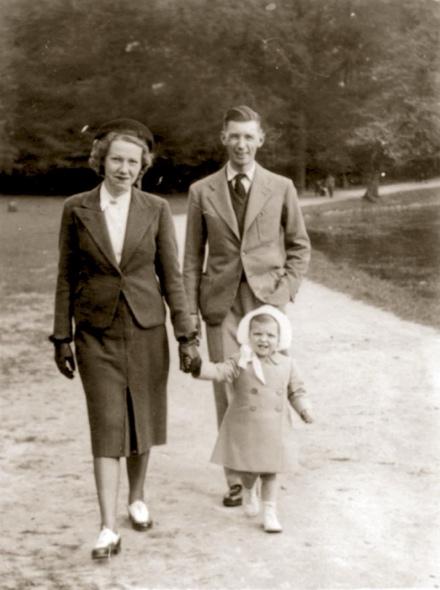
In 1940, in the panic that followed the first bombings of Brussels, Georges and Germaine decided to flee. They took refuge with their cat Thaïke, their sister-in-law Jeannot and their niece Denise (right), at the home of the cartoonist Marijac, in Auvergne. Collection Philippe Goddin
1942
The publisher Casterman, which planned to publish 64-page books in colour from now on, persuaded Hergé to gradually adapt the episodes already published to these new constraints.
1944
The liberation of Belgium on 3rd September put an end to the publication of The Adventures of Tintin in Le Soir. Some consider that, having published in a newspaper controlled by the German occupier, Hergé “collaborated” with it.
1945
The cartoonist continued the important work of his first adventures, which were published one after the other according to the new standards.
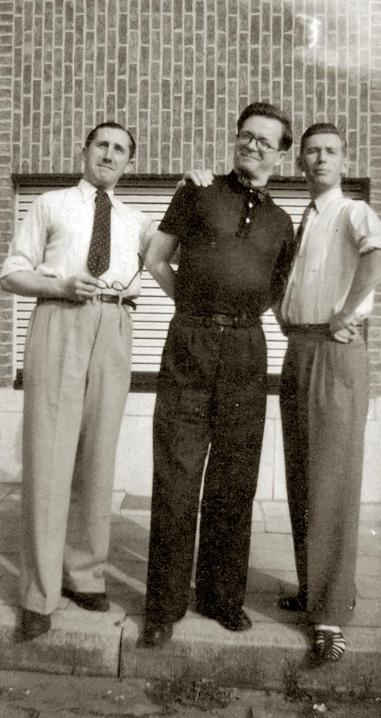
1945. Edgar Pierre Jacobs (left) and Jacques Van Melkebeke (centre) will be Hergé's first collaborators. Collection Georges Remi
1946
On 26th September, the first issue of Tintin magazine, a new weekly magazine created for young people by a former resistance fighter, Raymond Leblanc, was published.
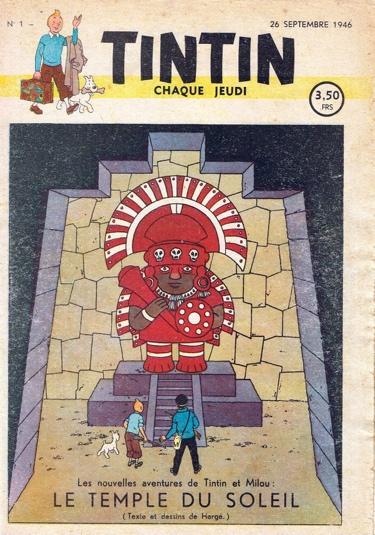
First issue of Tintin magazine - 26th September 1946
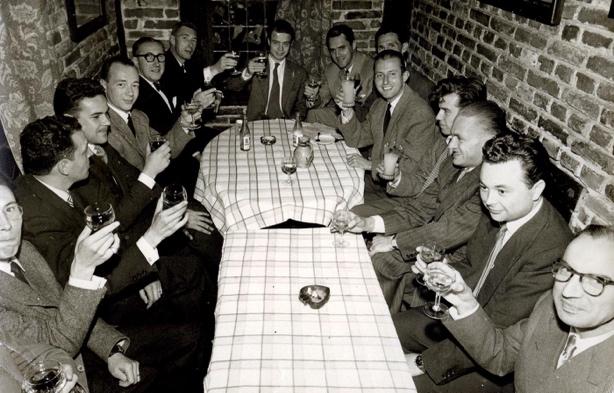
The team of Tintin magazine in 1953 at the Auberge du Château de Berseel. Collection Studios Hergé
1950
Having undertaken Explorers on the Moon, an episode that required significant technical work, great documentary rigour and special attention, Hergé surrounded himself with collaborators and founded the Hergé Studios.

The Hergé Studios in 1958. Bob De Moor, Joseph Loeckx (known as Jo-El Azara), Jacques Martin, Michel Demarets, Baudoin van den Branden, Josette Baujot, Hergé, France Ferrari, Fanny Vlamynck, Alexis Remi. © Nemerlin
1955
Tintin, whose adventures are becoming more and more successful, is so popular that advertising is interested in him. At the same time, Hergé developed a collection of chromos in which Tintin played the role of presenter in different fields of knowledge.
1960
Tintin makes films and it is the young Belgian Jean-Pierre Talbot who plays him on the big screen in Tintin and the Mystery of the “Golden Fleece”. The actor did it again in 1964, in Tintin and the Blue Oranges. Georges Remi discovered contemporary art, which became a real passion. He separated from his wife.
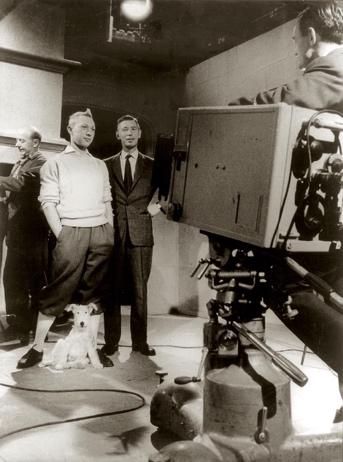
Hergé at the Boulogne-Billancourt studios with Jean-Pierre Talbot, during the promotion of the film Tintin and the Mystery of the Golden Fleece, in 1961. © 7 Day TV
1969
Belvision Studios in Brussels is producing a feature film cartoon based on the album Prisoners of the Sun.
1971
During his first trip to the United States. Hergé met a Redskins.

1971. Forty years after Tintin, Hergé discovered America. Here with the descendant of the great chief Red Cloud. Private collection
1973
Casterman Editions published the first volume of the Hergé Archives. The mythical Tintin, reporter of Le Petit Vingtième in the Land of the Soviets, reappears, more than forty years after he was nowhere to be found. Hergé visited Taiwan, thirty-five years after receiving the official invitation made to him.
1976
I, Tintin, a feature-length documentary dedicated to the hero and his creator, is released. On 29th September, the bronze statue of Tintin and Snowy was unveiled in Brussels.
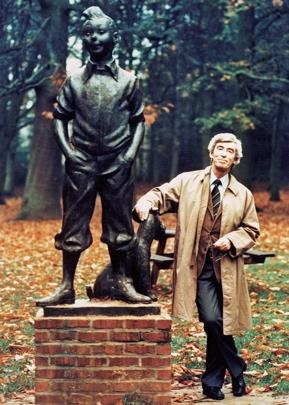
In 1979, Tintin and Snowy were fifty years old. Hergé poses next to the bronze statue that was made by Belgian artist Nat Neujean three years earlier. © Hergé Studios
1977
The divorce from his first wife having been finalised, Georges Remi married Fanny Vlamynck.
The American Andy Warhol, leader of Pop Art, made a series of four portraits of Hergé. The fifty years of Tintin’s existence are commemorated almost everywhere.
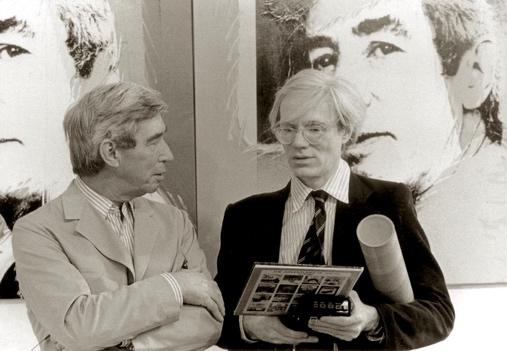
Hergé and Andy Warhol at a vernissage at Galerie D in Brussels in 1977. © Hergé Studios
1981
An emotional reunion between Hergé and Chang Chong-chen, the Chinese friend who had inspired The Blue Lotus forty-five years earlier.
1982
To celebrate Hergé’s seventy fifth birthday, the Belgian Astronomical Society named a recently discovered planet after him. The planet Hergé is located between Mars and Jupiter.

1982. One of Hergé's very last portraits, on the occasion of his birthday in the Wolvendael Park in Brussels. © Gamma-Studios
1983
On 3rd March, Georges Remi, also known as Hergé, died.













